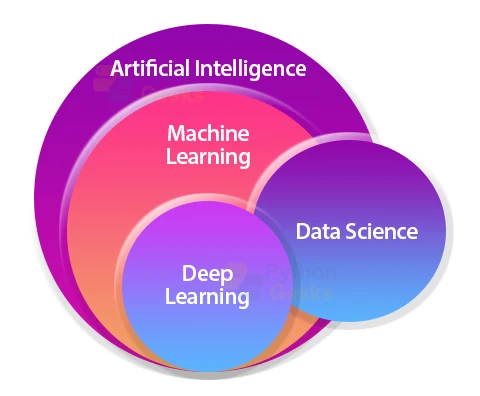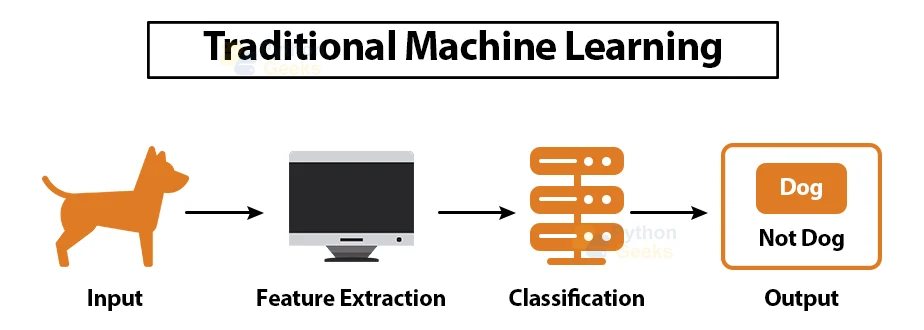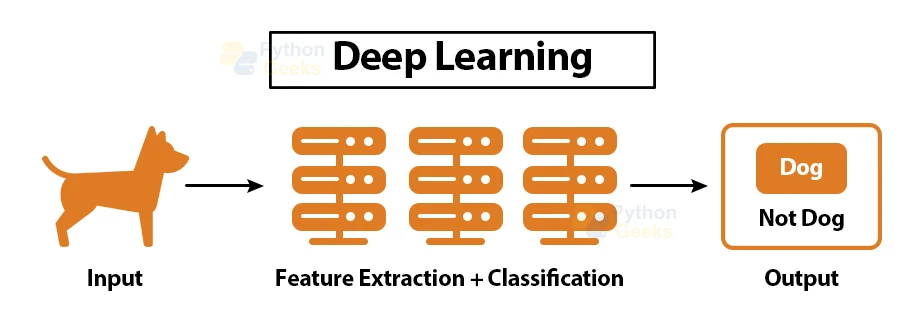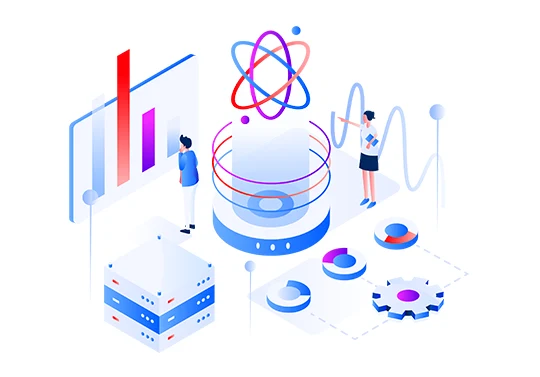AI vs Data Science vs Deep Learning vs ML
In the early 1900s, the ones who ridiculed the concepts of electricity were the ones unaware of the amazing credibility of electricity. In recent times, the ones who ridicule the concepts of Big Data technologies are the real ignorant ones. If you are interested in a career in technology, but you are still confused between technologies like AI, ML, Data Science, and Deep Learning, then don’t worry. This article from PythonGeeks has got you covered.
In this article, we will try to comprehend the difference between AI vs Data Science vs Deep Learning vs ML so that you will be able to see the clear difference between the technologies and not treat them as mere buzzwords. Though some might agree that the distinction between these technologies is not clear cut, this article will help you tell the difference between these technologies and also tell you the ways in which they are interlinked to each other. So, let’s go through the article and look at the difference closely.
We will first cover the brief introduction of each of the technologies, look at their workings and then, at last, we will look at the difference between AI vs Data Science vs Deep Learning vs ML in a tabular format.
Artificial Intelligence
Artificial Intelligence is the most talked about and widely used branch of computer science. It focuses mainly on building smart machines that are capable of performing tasks that replicate human intelligence without any human interference.
These systems, built using Artificial Intelligence models, tend to mimic human cognitive functions, that allows decision making, and also helps to improve learning. AI-enabled systems are also able to forecast financial and business outcomes and can efficiently provide solutions for businesses. The main focus of these machines is to interpret data to achieve business goals that are highly precise and efficient.
AI-based machines can not only learn from human cognitive functions but are also able to think human-like. We can even program them to contribute towards drawing data-driven conclusions to help us achieve the business goals. At the preliminary level, we can interpret that AI is equivalent to a programmed rule. It instructs the machine to behave in a certain programmed way in particular situations.
We can demonstrate the working of AI in brief with the following steps:
1. Collect Data
2. Clean and Prepare Data
3. Train the Model
4. Test the Data
5. Improve
With these brief and efficient steps, Artificial Intelligence is able to create the convenient world that we are living in right now.
Machine Learning
Machine Learning is the subdomain of artificial intelligence and its base lies in the usage of algorithms and data. We need to have prior knowledge of coding as well as complex math problems in order to build reliable and efficient Machine Learning models.
Machine learning algorithms make use of computational methods and try to “learn” from the input data without the requirement of any predetermined equation. It comprises an application of AI that allows the systems to learn and improve significantly from the past data experience.
Machine learning algorithms tend to develop their performance with an increase in the rates of samples available to learn and fabricate better models. Machine learning algorithms make use of the previously fed data as input to predict the new and accurate output. These algorithms tend to identify data patterns, build self-explanatory models, and make predictions by learning from the errors of the past models.
The only criteria that we need to follow while training these models is that you need to train them with an effective and huge amount of data. The more data you provide for the training of your algorithm, the better and accurate your model will be able to predict the results.
The working of the Machine Learning models is simply put as:
1. Gather data from source
2. Clean and filter the data
3. Choose the effective algorithm according to your problem
4. Train the test model
5. Tune in the parameters for best performance
6. Test the models and try to improve the efficiency
7. Deploy the final model having precise outputs
Types of Machine Learning
1. Unsupervised Machine Learning
In this type of machine learning, we feed in unlabelled data to the model and allow it to recognize the patterns in the given dataset. ML algorithms traverse through the input data sets and try to recognize any hidden patterns or meaningful connections between the data points.
Unsupervised learning makes use of algorithms like Principal Component Analysis (PCA), Clustering, Association Rules, Dimensionality reduction, and many others in order to predict reliable and precise outcomes.
2. Supervised Machine Learning
Supervised Learning, as the name suggests, is when the model learns under the supervision of any observing agent as opposed to that of Unsupervised Machine Learning. In this type of machine learning, we feed labeled data to the machines as the training data and train the models to correctly label the output data. These Machine learning algorithms predict the output of the model from the input data which we will compare with the expected result.
We will try to understand this concept with an example. Consider a situation where we want our system to learn cat detection. For this prediction we will provide the system with thousands of cat images as the labelled training data, draw a bounding box around the cat for bifurcation and feed the entire dataset to the machine so it “learns” on its own and predicts the image of a cat every time we feed in a cat picture for prediction.
Deep Learning
Deep learning is again a subfield of the artificial intelligence domain. It makes use of a multi-layered structure of algorithms, more commonly known as a neural network. Deep Learning, like Machine Learning algorithms, also need data for learning and solving problems like classification and prediction. We can even consider Deep Learning as a subdomain of machine learning.
People sometimes get confused between the terms machine learning and deep learning and often treat them as synonyms for each other. However, both of these systems have different capabilities and working algorithms.
Unlike Machine Learning, we do not need trained data for the model training in Deep Learning, since we can use this technology when we do not have well classified data. The Deep Learning system looks for appropriate differentiators in the given data points without considering any external classification. This is how we can avoid the situation of human interference for the training of the Deep Learning Model.
These models analyze new entities for new features at each layer and use it to choose the way in which we can classify the entries. The system keeps on checking itself in order to look for new classifications or categories that we can generate from the new entities.
Data Science
Data science is a discipline that makes use of various technologies and methods to analyze huge loads of data. It acts as the conjunction between the computational science, statistics, mathematics, and knowledge of the company or business for analyzing data and deriving useful results.
The main focus of data science models is to recognize patterns in the given input data sets. It makes use of numerous statistical techniques to analyze and extract information like features and classifiers of the data from the given data sets. With the help of these valuable insights, data scientists can help companies make smarter business decisions based on their data about previous sales and marketing figures.
We can understand the working of Data Science model with the following points in brief:
1. Gather data from sources
2. Filter and process the data
3. Find trends in data and get insight
4. Build useful data models
5. Measure the performance
Thus, we have seen the introduction of the various technologies in brief and also came across their workings and area of application in brief. Now let us look at the difference between these technologies. In order to understand the differences in a more comprehensive way, we will try to formulate a table of their differences.
Difference between AI vs Data Science vs Deep Learning vs ML
| Artificial Intelligence | Machine Learning | Deep Learning | Data Science | |
| Technology | Uses decision trees, logic, and statistical data to mimic human intelligence | Uses statistical methods and algorithms to enable machines to learn from experience | Relies on algorithms and artificial neural networks, designed to imitate how humans think and learn | Uses math, programming, and business analysis to produce insights from huge volumes of data |
| Computational Requirements | Requires more computational power to make machines acquire human-level intelligence | Requires high-performance computers with good-quality GPU for the machine learning algorithms to function | Deep learning is computationally expensive given it is remarkable at modeling diverse phenomena | Requires higher RAM to find and extract patterns in data |
| Problem Solving Pattern | Chooses algorithms basis complexity of the problem, contributing towards cost and time saving | Divides a given problem into subsets, solves individually, and gives a combined output | Analyzes difficult problems in its hidden layers and performs automatic feature extraction | Collect, analyze, and define data. DS makes use of analytics-based approaches to extract knowledge and actionable insights |
| Data Dependency | Requires a lot of data to work on and obtain results | The more data a system receives, the more it learns to function better | Powered by massive amounts of data | Heavily dependent on data |
| Functionality | It accounts for a broader segment and focuses mainly on intelligent behavior than accuracy | Results are largely dependent on accuracy and patterns | Derives specific features from the raw input | Proposes insightful solutions from raw undefined data for effective decision making |
Conclusion
Thus, we have reached the conclusion of this article that talked about the differences between the major technologies like Artificial Intelligence, Machine Learning, Deep Learning, and Data Science. With the thorough insight in these technologies, you will now be able to tell apart the differences between these technologies and thus be more proficient in handling them.
Knowing the differences between these technologies will also help you in deciding the field of your choice. Now that you are thorough with this article, terms like AI and ML are no more buzzwords for you. Hope this article was clear of your doubts revolving around these trending technologies.




